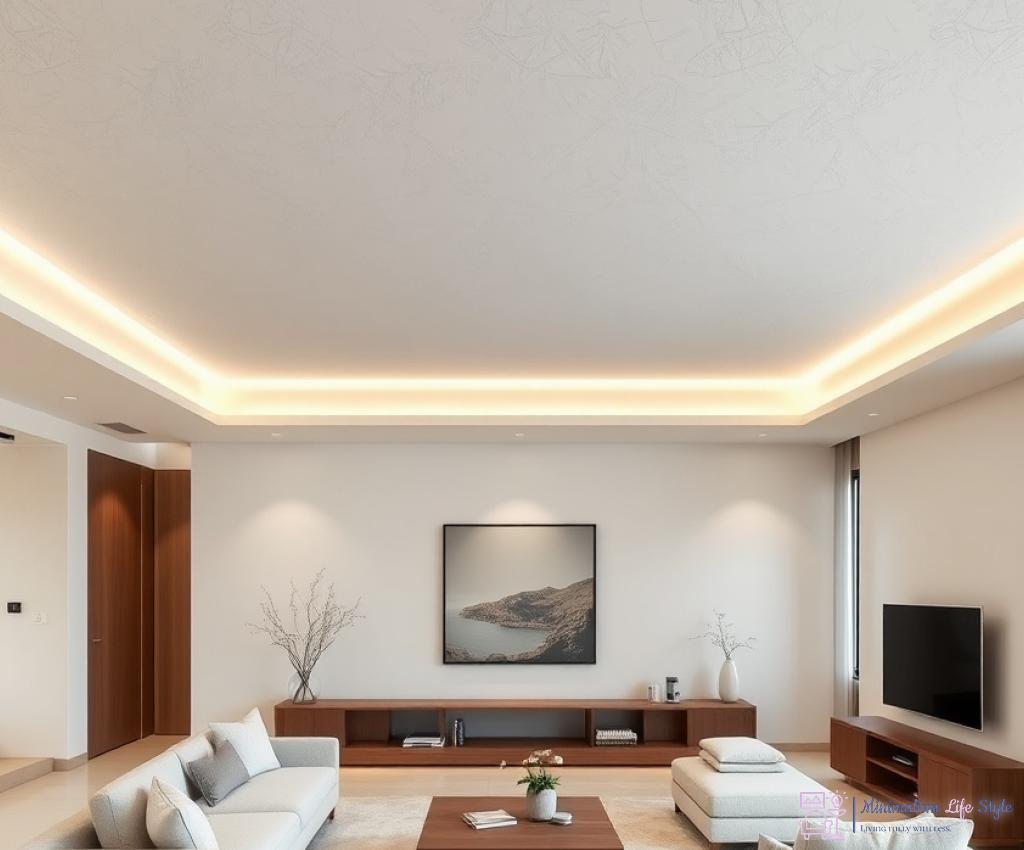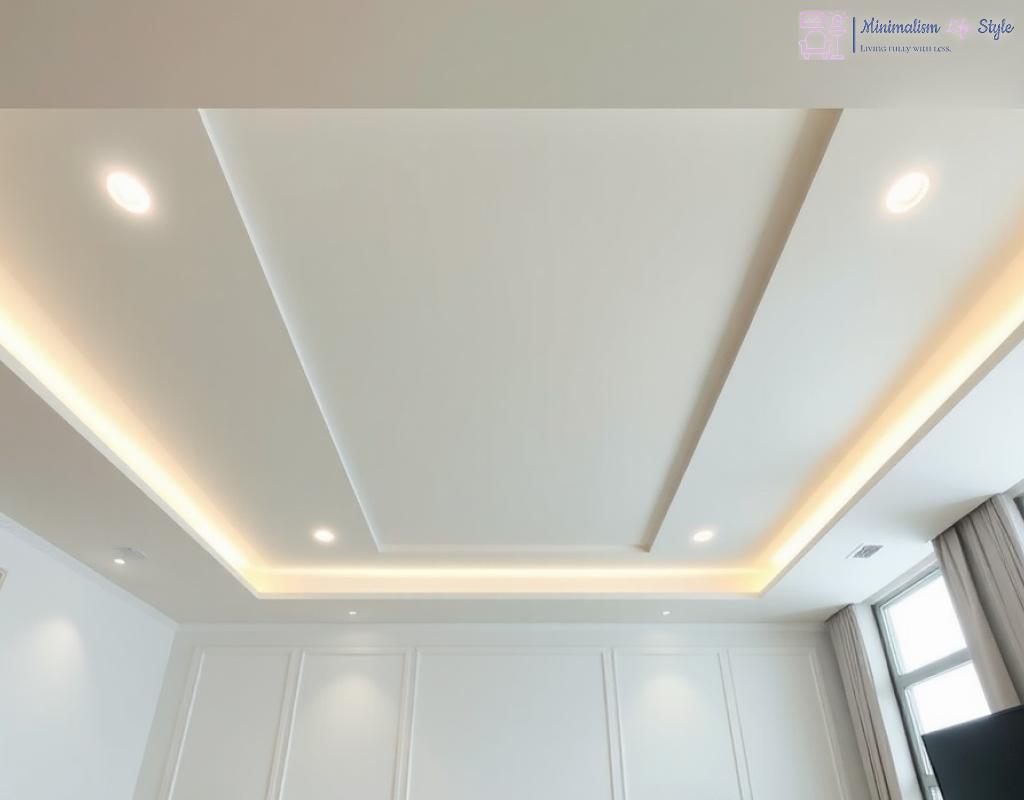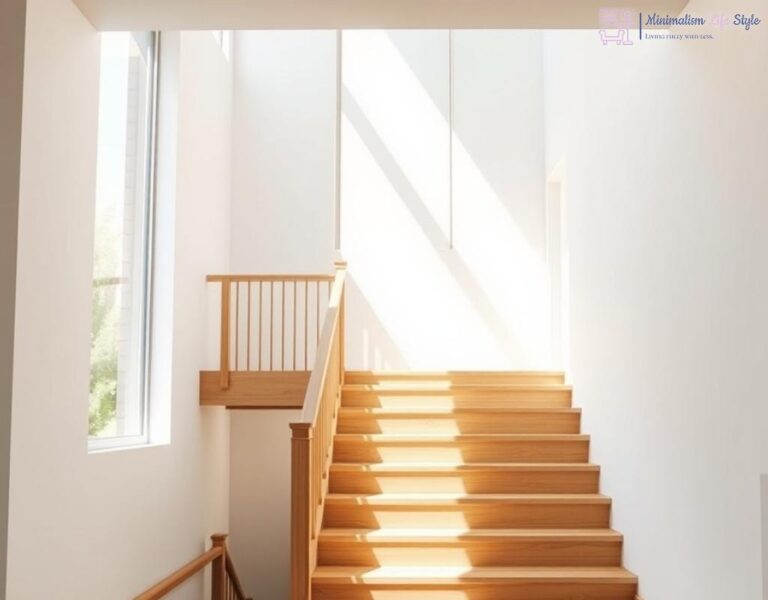Embracing Minimalism: The Essence of Ceiling Design

When we think about home design, our attention often gravitates towards walls, furniture, and decor. However, the ceiling is a canvas waiting to be highlighted. A minimal ceiling design can dramatically transform a space, creating an atmosphere of sophistication and tranquility. By embracing minimalism, homeowners can enhance their interiors while making a bold statement.
Minimalist ceilings strip away unnecessary details, allowing the beauty of simplicity to shine through. This approach doesn’t just involve reducing clutter but also emphasizes strategic design elements that work in harmony with the overall decor.
There are several essential elements that define a successful minimalist ceiling design. By focusing on these aspects, you can achieve an elegant ceiling that complements your home’s aesthetic.
- Color Palette: Neutral tones such as whites, grays, and soft pastels are pivotal. They evoke calmness and create an illusion of space.
- Materials: Natural materials like wood or drywall can be used to enhance the minimalist look, while avoiding overly ornate finishes.
- Lighting: Integrated lighting systems can provide functionality without overwhelming the ceiling design. Consider recessed lights to maintain a clean profile.
- Texture: Subtle textures can add depth without compromising the minimalist ethos. Think about smooth finishes or a slight sheen.
To better understand the impact of minimal ceiling designs, let’s compare traditional and minimalist styles. This side-by-side evaluation can illuminate the advantages of adopting a minimalist approach.
| Feature | Traditional Ceiling Design | Minimal Ceiling Design |
|---|---|---|
| Detailing | Ornate moldings, patterns | Sleek lines, subtle textures |
| Color | Bold colors and multiple shades | Neutral tones |
| Lighting | Chandeliers, decorative fixtures | Recessed or simple pendant lights |
| Overall Feel | Heavy, crowded | Airy, spacious |
As shown in the table, the minimalist approach not only provides a fresher, more open feel but also highlights the beauty of simplicity. By embracing minimalism in ceiling design, you can create a space that feels both modern and timeless.
Color and Texture: Enhancing Ceiling Aesthetics
In the realm of minimal home ceiling design, the interplay of color and texture is paramount. These elements not only define the aesthetic appeal of a space but also influence the overall ambiance. By carefully selecting colors and incorporating subtle textures, homeowners can elevate their ceilings from mere structural features to stunning focal points that enrich the living environment.
When it comes to ceiling design, color selection is crucial. A well-chosen palette can create a sense of serenity, spaciousness, or warmth, depending on the desired effect. Here are some considerations for achieving color harmony:
- Neutral Tones: Opting for whites, beiges, and soft grays can foster an airy atmosphere, making spaces feel larger and more open.
- Accent Colors: Introducing subtle accent colors, such as muted pastels, can provide a refreshing twist without overwhelming the senses.
- Consistency: Ensure that the ceiling color complements the walls and furnishings for a cohesive look throughout.
While minimalism often leans towards simplicity, texture plays a vital role in adding depth and interest to ceiling designs. Here’s how you can effectively incorporate texture:
- Smooth Finishes: A smooth ceiling can evoke a clean and polished look, aligning perfectly with the minimalist philosophy.
- Textured Panels: Consider using lightly textured panels or planks that deliver visual intrigue while maintaining a sophisticated appearance.
- Ceiling Treatments: Techniques such as coffered ceilings or subtle grooves can introduce a modern flair without detracting from the minimalist essence.
In conclusion, the thoughtful combination of color and texture in ceiling design can dramatically enhance the overall aesthetic of a home. By selecting neutral palettes and incorporating subtle textures, homeowners can achieve that perfect balance between simplicity and elegance, making their spaces both inviting and visually appealing.
Lighting Solutions: Elevating Simplicity
In the realm of minimal home ceiling design, lighting is not merely functional; it plays a pivotal role in enhancing the overall simplicity and elegance of the space. The right lighting can accentuate the beauty of a minimalist ceiling, creating a harmonious atmosphere that draws the eye upward and invites a sense of tranquility. As we delve into various lighting solutions, we’ll explore how to elevate simplicity through thoughtful illumination choices.
Minimalist designs thrive on the notion of ‘less is more,’ and this principle extends to lighting solutions. When selecting lighting for a minimal ceiling, it’s essential to consider options that seamlessly integrate into the overall decor while providing adequate brightness. Here are some effective strategies to achieve this:
- Recessed Lighting: This option is a favorite among minimalists. By embedding fixtures into the ceiling, recessed lighting creates an unobtrusive glow that enhances the space without interrupting clean lines.
- Pendant Lights: For a statement piece that still adheres to minimalist aesthetics, select simple pendant lights with sleek designs. Opt for fixtures in neutral colors or materials that resonate with the ceiling’s texture.
- LED Strip Lighting: Installing LED strips along the edges of the ceiling or in coves can provide a soft, ambient glow. This modern approach highlights architectural features while maintaining an uncluttered look.
- Natural Light Maximization: Whenever possible, embrace natural light through strategically placed windows or skylights. The interplay of sunlight with minimalist ceilings creates a dynamic and inviting atmosphere.
Another essential aspect of lighting in minimal ceiling design is the capability to control ambiance through dimmers. By installing dimmer switches, homeowners can adjust the intensity of light to suit various occasions, enhancing the mood of the space:
Versatility: Dimmers provide versatility, allowing you to transition from bright, functional lighting during the day to soft, ambient light in the evenings.
Highlighting Features: Use dimmers to highlight specific areas or features of the ceiling, such as textured panels or architectural details, without overwhelming the overall design.
Incorporating lighting solutions into minimal ceiling design is an art that balances functionality with aesthetic appeal. By focusing on subtle, integrated lighting options and utilizing dimmers, homeowners can elevate their spaces to new heights of elegance. Embracing the simplicity of lighting not only enhances the beauty of the ceiling but also enriches the entire living environment, reflecting a lifestyle that celebrates minimalism in its truest form.
Materials Matter: Choosing the Right Ceiling Finish
When it comes to crafting a minimalist ceiling design, the choice of materials is pivotal in achieving a harmonious balance between aesthetics and functionality. Selecting the right ceiling finish can elevate a space, adding depth and character while ensuring that the overall design remains uncluttered and serene. In the world of minimalism, where every detail counts, understanding the unique properties of various materials can guide homeowners in making informed decisions that resonate with their vision of simplicity and elegance.
One of the primary considerations in minimal ceiling design is the choice between natural and synthetic materials. Natural materials, such as wood and plaster, often bring warmth and authenticity, invoking feelings of comfort. Wood, with its organic textures and subtle variations, can create a soft focal point, enhancing the visual appeal without overwhelming the senses. On the other hand, synthetic materials, like PVC and engineered panels, can offer sleek finishes that align perfectly with a modern aesthetic. These materials often come with practical benefits such as durability and ease of maintenance, making them an attractive choice for contemporary homes.
The finish applied to the ceiling material plays a crucial role in defining the ambiance of a space. Smooth finishes create a clean, polished look that embodies the essence of minimalism. They reflect light beautifully, enhancing the feeling of openness and airiness within a room. Conversely, opting for textured finishes can add subtle visual interest without detracting from the minimalist ethos. Techniques such as a light stucco or a softly brushed treatment can introduce a layer of depth, inviting curiosity while maintaining an uncluttered appearance. Furthermore, the choice of finish should complement the lighting solutions selected, ensuring that the materials work in synergy to create a cohesive aesthetic experience.
Ultimately, the decision on materials and finishes for a minimalist ceiling design should reflect the homeowner’s personal style while adhering to the principles of simplicity and elegance. By thoughtfully selecting materials that harmonize with the overall design scheme, one can achieve a ceiling that not only serves as a functional element but also as a striking feature that enhances the beauty of the entire living space.
Architectural Details: Subtle Features that Shine
In the world of minimalist design, less truly is more. While homeowners often focus on bold furniture and striking colors, the ceiling presents an opportunity to incorporate architectural details that resonate with sophistication and understated beauty. These subtle features can elevate the overall aesthetic of a room, making the ceiling a silent yet impactful player in the design narrative.
Minimalist ceilings thrive on simplicity, but that doesn’t mean they lack character. One of the most compelling ways to achieve this is through the incorporation of clean lines and geometric forms. Architects often leverage these elements to create a sense of structure that complements the open space below. Here are some features to consider:
- Framed Beams: Exposed beams painted in a light hue can create a striking visual contrast while maintaining an airy feel.
- Angular Shapes: Incorporating sloped or angular ceiling designs can introduce modernity without overwhelming the simplicity of the space.
- Linear Patterns: Subtle grooves or panels can direct the eye and add dimension, enhancing the overall architectural appeal.
Beyond aesthetics, the integration of functional elements within the ceiling design offers a dual benefit. When these features are executed subtly, they can enhance the minimalist theme while serving practical purposes. For instance, consider the following:
- Built-in Shelving: Concealed storage solutions can be integrated into the ceiling design, providing functionality that doesn’t disrupt the sleek appearance.
- Acoustic Panels: These can be subtly incorporated to improve sound quality without drawing attention away from the ceiling’s beauty.
- Lighting Recesses: Thoughtfully placed recesses can house lighting fixtures that illuminate without overshadowing the minimalistic ethos.
By focusing on these architectural details, homeowners can harness the power of subtlety to create ceilings that are not only functional but also visually captivating. The beauty of minimal home ceiling design lies in its ability to transform an ordinary space into an extraordinary one, all while keeping elegance and simplicity at the forefront.




